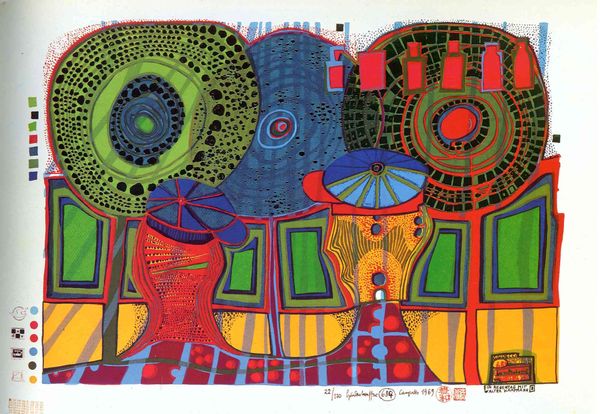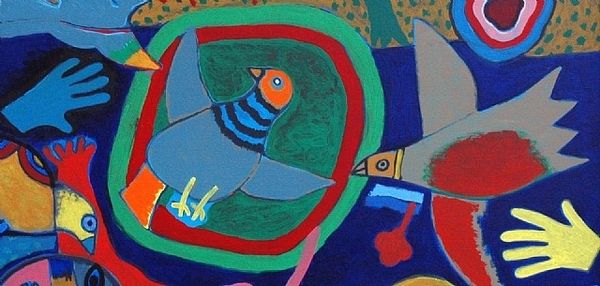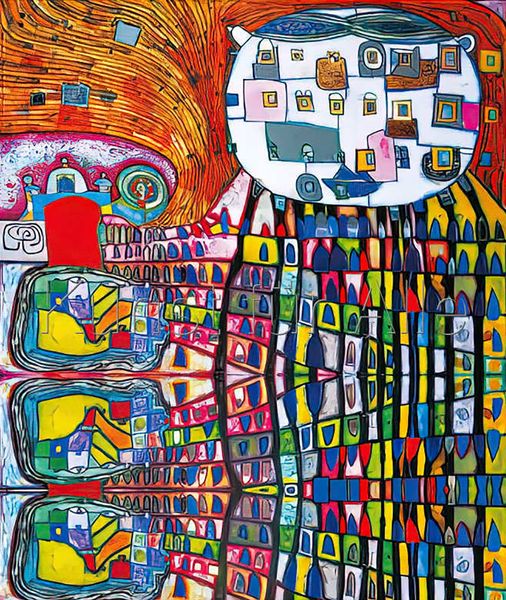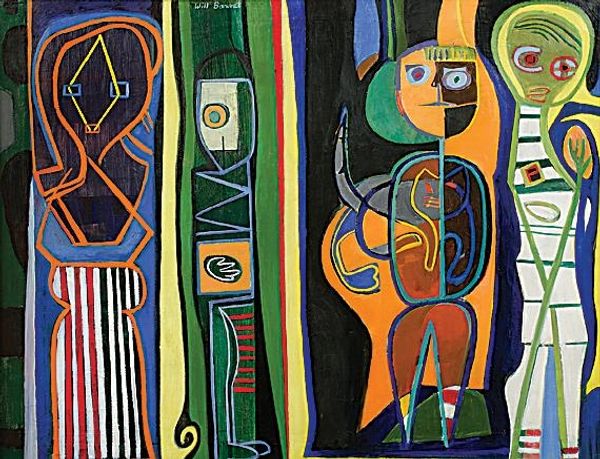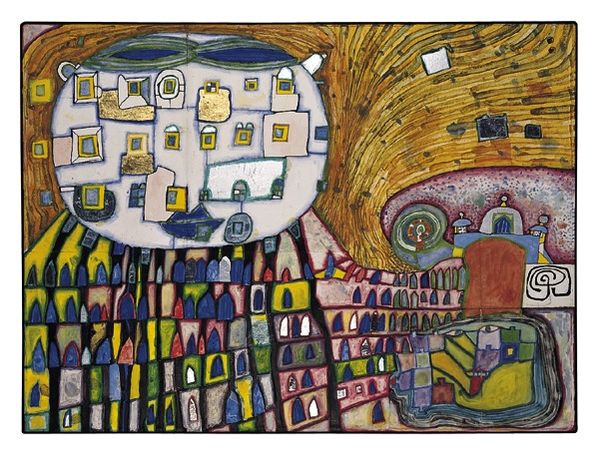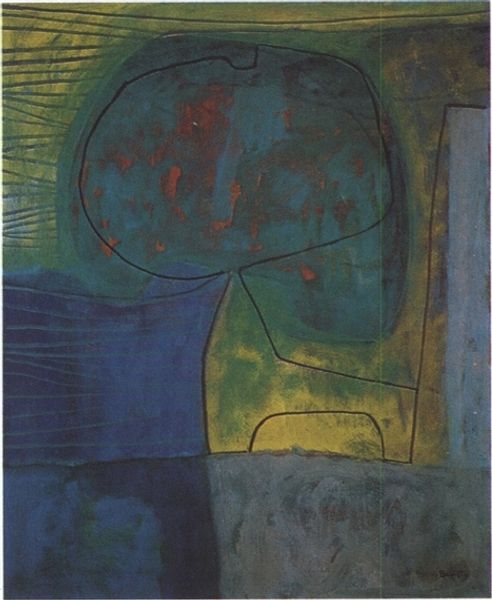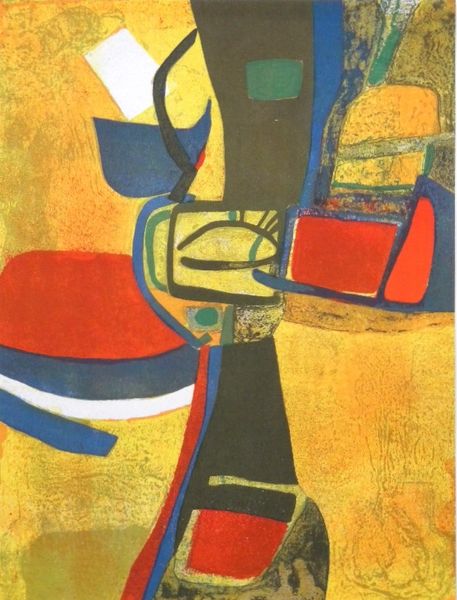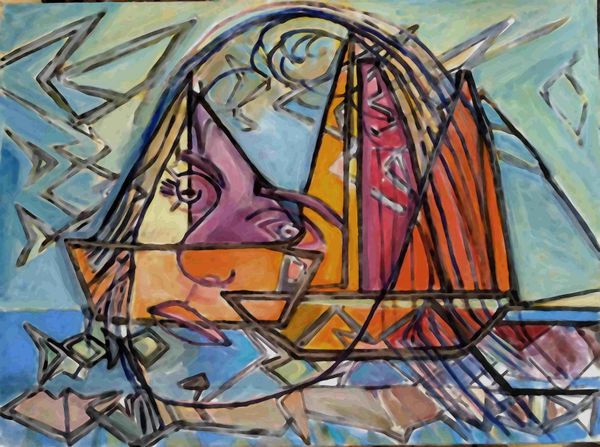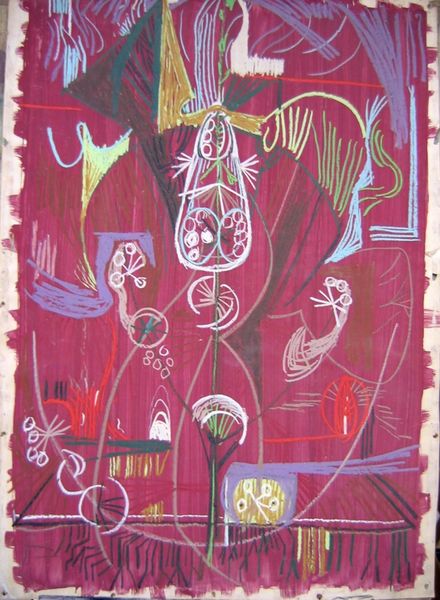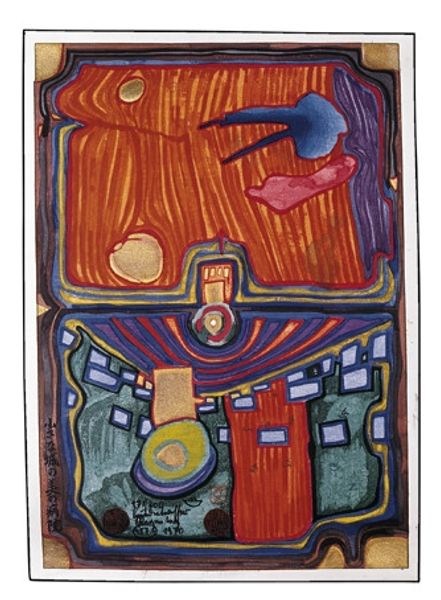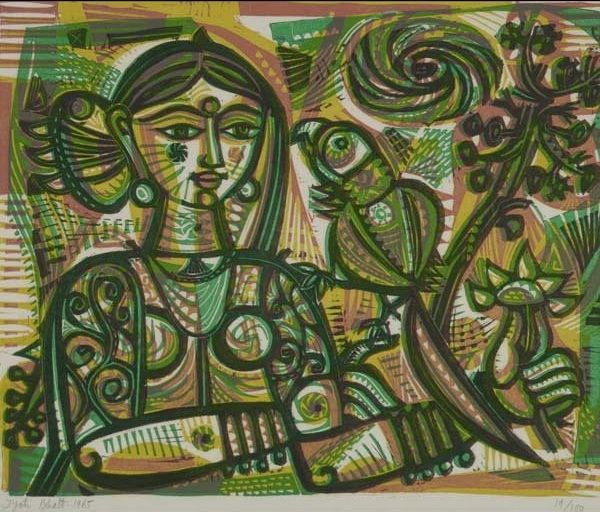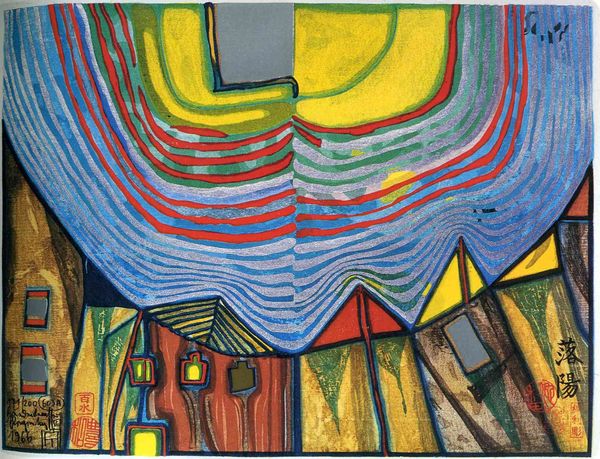
Copyright: NAMIDA AG, Glarus (displayed with the permission of Hundertwasser Non-Profit Foundation) The displayed work of art is protected under the copyright law. In particular, it is not permitted to reproduce, to alter, to print or to publish these works of art. Violations will be prosecuted according to civil and criminal law.
Editor: Here we have Friedensreich Hundertwasser's "687A Columbus Rainy Day in India," created in 1972. It’s so vibrant, all greens and blues. It feels almost like a face emerging from a forest, but there's also this distinct boat form. What’s your interpretation of this work? Curator: It’s intriguing how Hundertwasser merges these disparate elements, isn't it? I think it invites us to consider the legacy of colonialism. “Columbus” situated in “India” during a rainy day-- that creates an immediate tension. Think about how he deliberately disrupts the traditional landscape genre, intertwining it with figuration and what appears to be architectural elements. Editor: So, you’re suggesting that the "Rainy Day" isn’t just a literal depiction of weather, but also perhaps a symbolic commentary on historical turbulence? Curator: Precisely! What visual clues support that argument for you? Consider the spiraling lines, a motif Hundertwasser employed frequently, and think of those not just as decoration, but as representing growth or perhaps even disruption. Where does this take us in our interpretation of naive art and its intersection with this historical setting? Editor: I see. The face or mask seems to be both emerging from and being consumed by nature and those architectural forms, and how all elements blend and create ambiguity. It questions power dynamics through his whimsical style. The art pushes beyond conventional beauty. Curator: It’s precisely that friction – between the seemingly joyful aesthetic and the underlying historical and cultural critique – that makes Hundertwasser's work so powerful and lasting, it creates an important conversation, and is the goal of much activist work. Editor: It does give a lot to think about. I went into this thinking “landscape,” but now it feels much deeper and more complex.
Comments
No comments
Be the first to comment and join the conversation on the ultimate creative platform.
